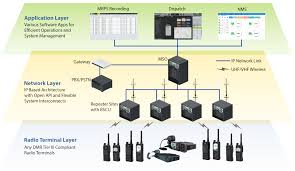Scalable Elastic SDN Controllers for Evolving Network Demands
telcomatraining.com – In today’s fast-paced digital era, networks are undergoing significant transformations driven by cloud computing, IoT proliferation, 5G deployment, and the increasing reliance on data-intensive applications. Traditional network architectures struggle to meet the growing demands of flexibility, scalability, and efficiency. As a solution, Software-Defined Networking (SDN) has emerged as a revolutionary approach to network management. One of the core components of SDN is the controller, which functions as the brain of the network. In response to ever-evolving network demands, Scalable Elastic SDN Controllers are becoming essential to ensure optimized performance and adaptability.
Understanding SDN and the Role of Controllers
SDN decouples the control plane from the data plane, enabling centralized and programmable network management. The SDN controller acts as a central point of control, maintaining a global view of the network and directing the behavior of network devices through southbound APIs like OpenFlow.
However, as networks grow in size and complexity, a single monolithic controller can become a bottleneck. To handle these limitations, scalable and elastic SDN controllers are developed to dynamically adjust resources, maintain high availability, and ensure seamless service delivery.
The Need for Scalability and Elasticity
Modern networks are characterized by fluctuating traffic patterns, varying workloads, and diverse service requirements. Scalability refers to the controller’s ability to manage an increasing number of network devices and flows without compromising performance. Elasticity, on the other hand, emphasizes the controller’s ability to adapt resource allocation based on real-time network conditions.
Without scalability and elasticity, SDN controllers may suffer from latency issues, reduced fault tolerance, and limited responsiveness—undermining the key benefits of SDN.
Features of Scalable Elastic SDN Controllers
- Distributed Architecture: Instead of relying on a single controller, scalable solutions deploy a cluster of controllers that share responsibilities. This distribution enhances fault tolerance and improves load balancing.
- Dynamic Resource Allocation: Elastic controllers leverage virtualization and cloud-native technologies to dynamically allocate computing resources based on network demand.
- High Availability and Fault Tolerance: Redundancy and failover mechanisms ensure that network services remain uninterrupted even if one or more controller nodes fail.
- Real-Time Monitoring and Analytics: Intelligent monitoring tools help controllers make data-driven decisions and adjust strategies on the fly.
- Modular and Extensible Design: A modular controller can easily incorporate new protocols, services, or applications, ensuring long-term adaptability.
Benefits for Evolving Network Demands
As enterprises and service providers transition to hybrid and multi-cloud environments, scalable elastic SDN controllers offer numerous advantages:
- Improved Network Agility: Quickly adapt to changing network configurations and service requirements.
- Optimized Resource Utilization: Automatically adjust resources to prevent underuse or overuse, leading to cost savings.
- Enhanced User Experience: Reduced latency and improved service reliability contribute to a better end-user experience.
- Future-Proofing Infrastructure: Easily integrate emerging technologies like AI-driven networking and edge computing.
Challenges and Considerations
Despite their advantages, implementing scalable elastic SDN controllers comes with challenges. Designing a truly distributed and consistent control plane is complex. Synchronization between multiple controllers, security risks, and interoperability with legacy systems are important considerations.
Furthermore, network operators must carefully plan controller placement, manage east-west communication between controllers, and ensure compliance with data protection regulations.
The Future of SDN Controllers
Looking ahead, the integration of artificial intelligence and machine learning with elastic SDN controllers promises to further enhance network automation and predictive capabilities. Cloud-native SDN solutions using container orchestration platforms like Kubernetes are also gaining traction, enabling microservices-based controller components for even greater scalability and resilience.
Conclusion
Scalable Elastic SDN Controllers are not just a technological upgrade—they are a necessity for networks striving to meet the dynamic demands of modern digital ecosystems. By embracing distributed, intelligent, and adaptive controller architectures, organizations can unlock the full potential of SDN, ensuring future-ready, high-performance, and efficient network infrastructure.







